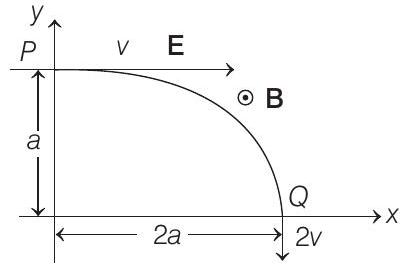Magnetics 1 Question 23
23. A particle of charge
 shown in figure. The velocities at
shown in figure. The velocities at
(a)
(b) Rate of work done by the electric field at
(c) Rate of work done by the electric field at
(d) Rate of work done by both the fields at
Show Answer
Answer:
Correct Answer: 23. (a, b, d)
Solution:
- Magnetic force does not do work. From work-energy theorem :
At
Therefore, option (b) is also correct.
Rate of work done at
of electric field
and of magnetic field is always zero. Therefore, option (d)
is also correct.
Note that






